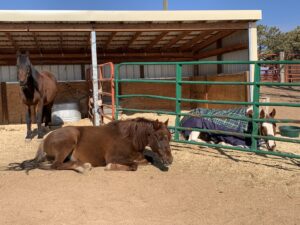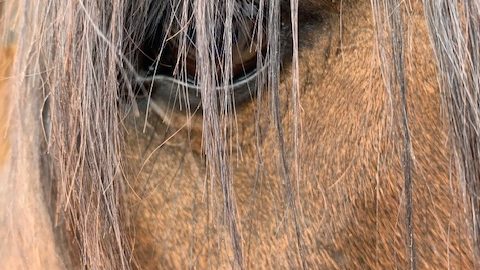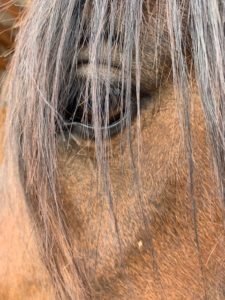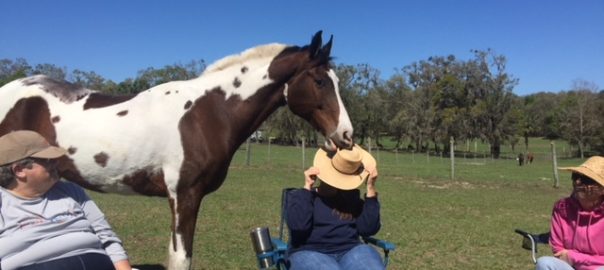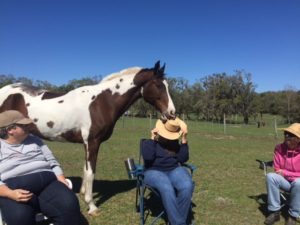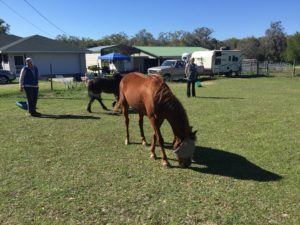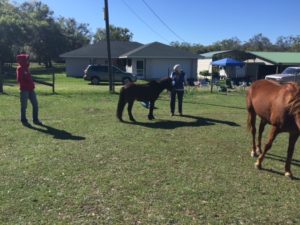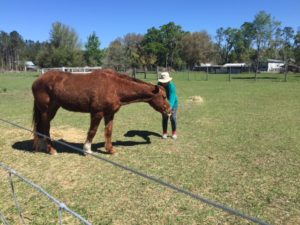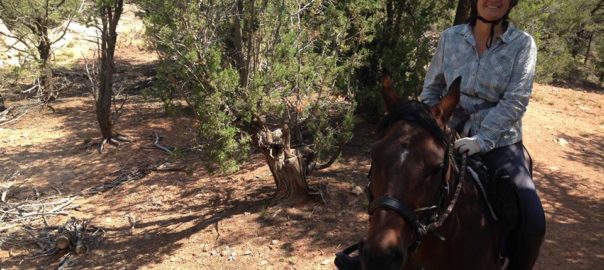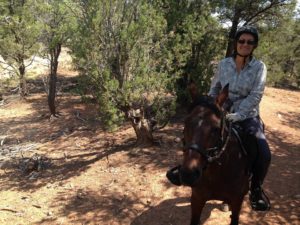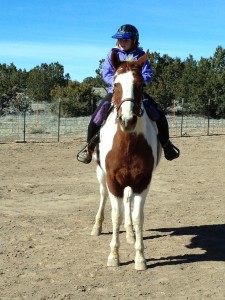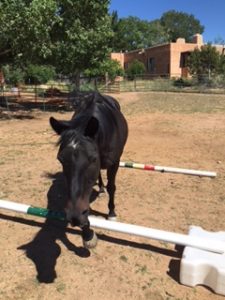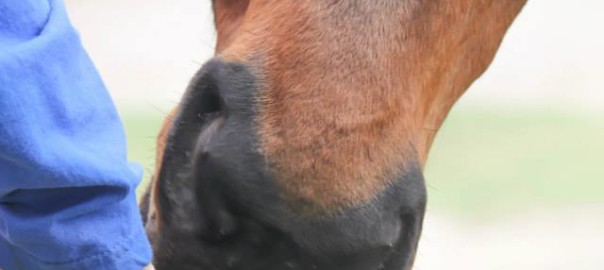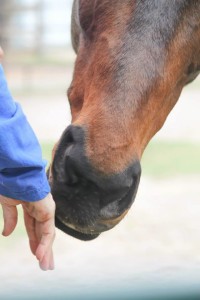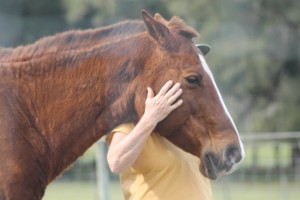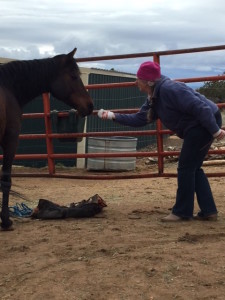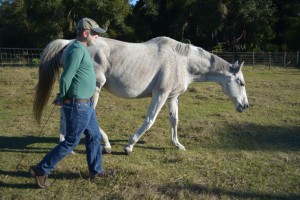Years ago, in a clinic I co-taught with Ruella Yates, we had a very shut down horse named Tank who thought humans only wanted him to do things, so he simply went through the motions like a robot. He had come to a place in life where he didn’t see much joy in activity with humans or anything else. He was an old lesson horse and his owner rode him but felt he really didn’t care about riding. She wanted so much for him to enjoy himself!
It was very difficult to engage him on the first day. I don’t like to have that feeling of “pulling teeth” with horses who just aren’t willing to engage even in an easy, non-stressful activity. Tank wasn’t asked to do anything and he was fine with that, as he didn’t want to do anything.
The second morning, we changed things up and brought him into the arena while we were doing a human energetic exercise. People began laughing as they took turns practicing being horses and played with the idea of moving each other around. This horse Tank was so curious about the people laughing that he came to hang out with us so he could be part of the fun. This changed everything for him. From thereon he began to have fun and got very engaged with each person who worked with him. His owner, Cathy, had never seen him take such an interest in any activity, although he did his jobs well.
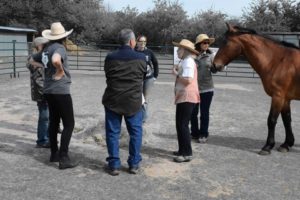
Jaak Panksepp, Estonian-American neuroscientist and psychobiologist who coined the term “affective neuroscience”, the name for the field that studies the neural mechanisms of emotion, researched laughter in non-human animals. He researched primates, dogs, and rats, but no horses. While I have no clinical research, I think it would be fun to see if horses emit sounds like laughter, and laugh with us. Certainly sometimes their expressions suggest that they do!
From my experience, I am sure some of them have a sense of humor. As a human, being able to share laughter is a huge release, and very healing, so horses must feel positive emotions when they hear it and feel it in their own bodies. Laughter releases our breath, and horses are notorious for holding their breaths, so when they hear the laughter, it can bring release to their entire body.
For Tank, laughter and no pressure engaged his curiosity and his desire to want to be part of the laughing, fun group.
A few tips for working with a horse like Tank:
- Create an activity of interest near the horse without expecting anything of the horse.
- Invite a friend over and talk about something positive, something other than the horse, or maybe a funny story or something that makes you laugh.
- Bring a small drum to play around the
 horse and see if he wants to engage with the sound and you.
horse and see if he wants to engage with the sound and you. - Don’t make a big deal of anything. If the horse wants to come and join your activity, that’s okay as long as he/she isn’t disruptive.
After doing one of these activities for awhile, the next day – or even the same day – you may find your horse wants to be around you more. Vary what you try as every horse is different and some will respond to one thing but not another.
These activities don’t need to be done every day, just once in awhile, a couple of times a week maybe. As you continue your regular routines with the horse, such as riding, grooming, etc. you may find the horse wants to be in relationship more than he or she did before. He seeks you out, follows you as you muck, walks freely with you as you go from corral to arena, perhaps.
For client horses you don’t see often, talk to them, drop your energy down into your feet, find out what helps the horse relax and engage, in his or her own body, what helps provide the best session possible. Getting to work with someone who spends a few moments relating, who isn’t expecting performance can be a genuine healing experience.



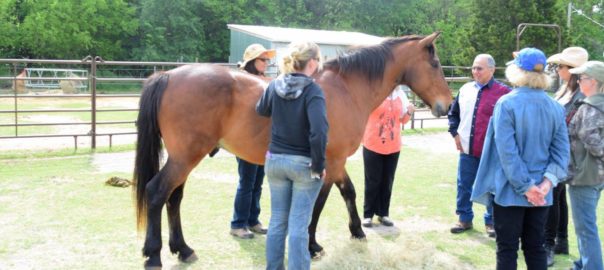
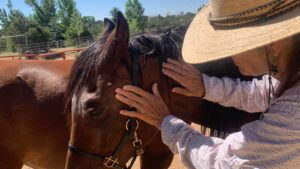 It’s very common for horses to be afraid of bodywork, especially if they have received fear-based training or a number of unpleasant veterinary procedures. Of course, veterinary procedures and surgeries are often non-negotiable. When I have a procedure personally, I can only imagine what that feels like to the horse who doesn’t understand why it’s being done to him or her.
It’s very common for horses to be afraid of bodywork, especially if they have received fear-based training or a number of unpleasant veterinary procedures. Of course, veterinary procedures and surgeries are often non-negotiable. When I have a procedure personally, I can only imagine what that feels like to the horse who doesn’t understand why it’s being done to him or her.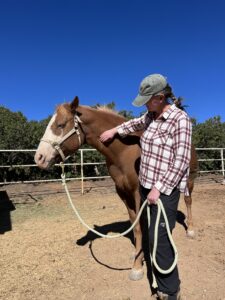
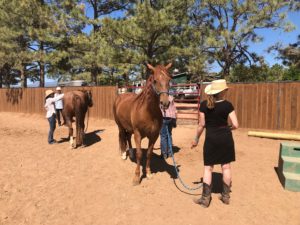 If your horse is continually miserable or reactive during a visit from any practitioner, it may be worthwhile to re-evaluate that professional relationship.
If your horse is continually miserable or reactive during a visit from any practitioner, it may be worthwhile to re-evaluate that professional relationship.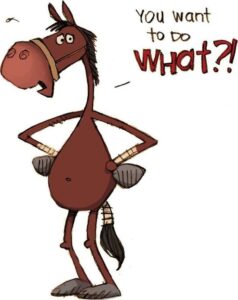 Sometimes I find that the owner isn’t aware of what other professionals are doing with their horses.
Sometimes I find that the owner isn’t aware of what other professionals are doing with their horses.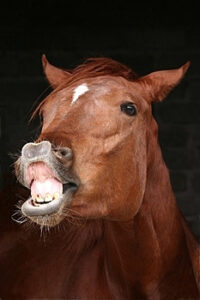
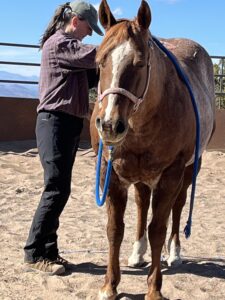
 Over the winter, I feel challenged to provide quality time with my horses. I want to make sure they don’t get bored and prone to injury. I also want to maintain my connection with them.
Over the winter, I feel challenged to provide quality time with my horses. I want to make sure they don’t get bored and prone to injury. I also want to maintain my connection with them.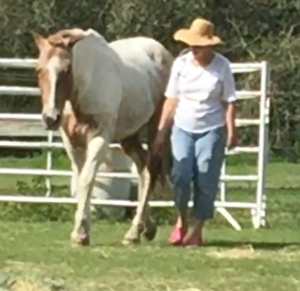 The person who asked about behavioral enrichment realized she had to get very creative. Yes! Exactly right! There are liberty exercises that can be done in muddy footing, which she and her mare had remembered from classes they took with me.
The person who asked about behavioral enrichment realized she had to get very creative. Yes! Exactly right! There are liberty exercises that can be done in muddy footing, which she and her mare had remembered from classes they took with me.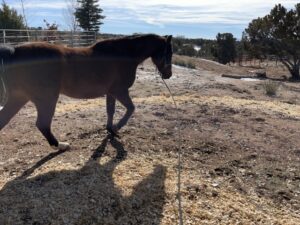 lateral work along the fence on good days. If there is any pattern at all during winter, it is snow plus cold, then sun and mud then a couple of days of dry ground so you can work.
lateral work along the fence on good days. If there is any pattern at all during winter, it is snow plus cold, then sun and mud then a couple of days of dry ground so you can work.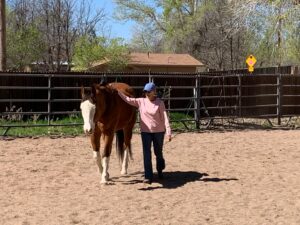
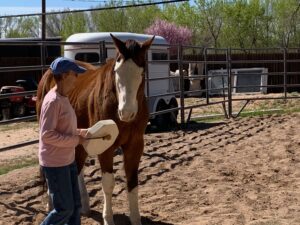 This type of engagement carries over, increases our mutual enjoyment of one another, so that when we actual do “work” again, there is more curiosity, engagement, a feeling of anticipation of what is to come.
This type of engagement carries over, increases our mutual enjoyment of one another, so that when we actual do “work” again, there is more curiosity, engagement, a feeling of anticipation of what is to come.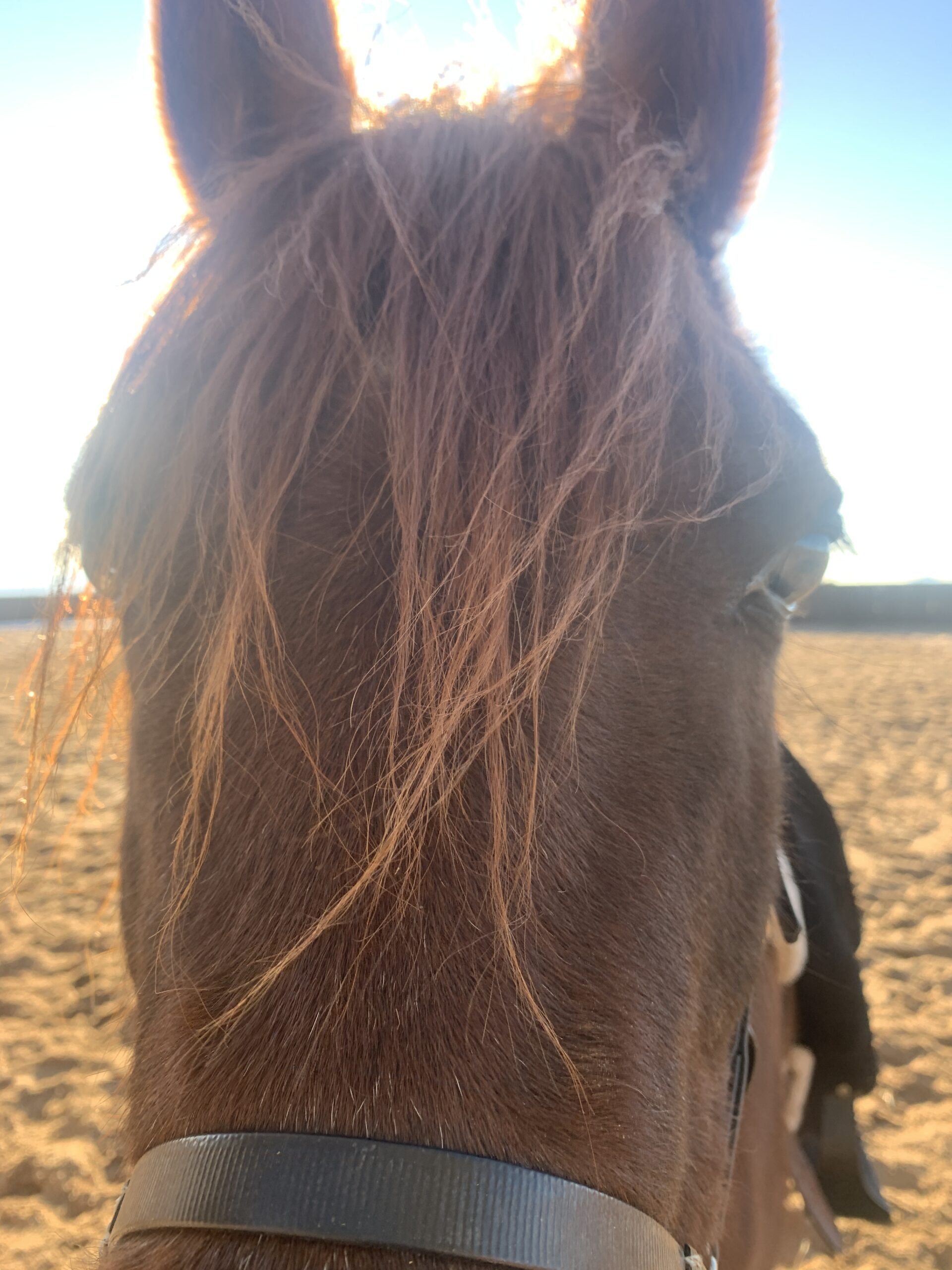
 We would like to be introduced in the best light possible. I say things that are true about Red and any horse that I know, if I know enough about them to comment. I say, she is the bravest, most courageous mare I have ever known, beautifully willing and enthusiastic. (If anyone will give me that much airtime!) And it is all true.
We would like to be introduced in the best light possible. I say things that are true about Red and any horse that I know, if I know enough about them to comment. I say, she is the bravest, most courageous mare I have ever known, beautifully willing and enthusiastic. (If anyone will give me that much airtime!) And it is all true.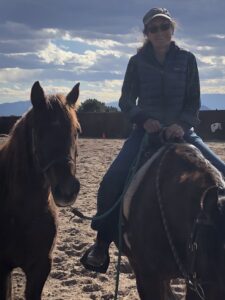 Years ago, when I was riding endurance, many rider/horse teams would head to El Paso during the winter months to ride. Horses had not had much riding time in the colder climates so one had to be careful as they traveled in the deep desert sand. Often the injuries that went unnoticed from the winter riding would appear in the spring.
Years ago, when I was riding endurance, many rider/horse teams would head to El Paso during the winter months to ride. Horses had not had much riding time in the colder climates so one had to be careful as they traveled in the deep desert sand. Often the injuries that went unnoticed from the winter riding would appear in the spring.
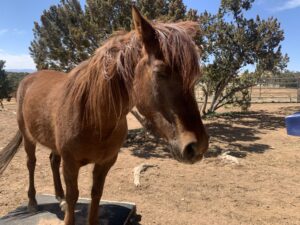 ve around freely is different than the measured, focused exercise we ask of a horse in daily work. Both are very important.
ve around freely is different than the measured, focused exercise we ask of a horse in daily work. Both are very important.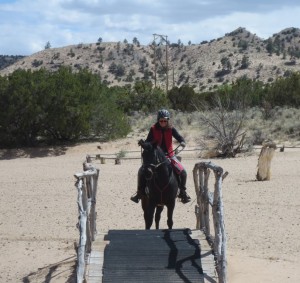 Walking on different types of terrain for horses who can manage it is vital.
Walking on different types of terrain for horses who can manage it is vital.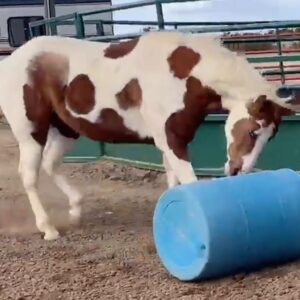 comfortable being ridden anymore. He’s now 26. He enjoys walks and arena activities. He is also teaching our young mare Red to be more curious than she already is. I think this is an excellent way for him to spend his golden years.
comfortable being ridden anymore. He’s now 26. He enjoys walks and arena activities. He is also teaching our young mare Red to be more curious than she already is. I think this is an excellent way for him to spend his golden years.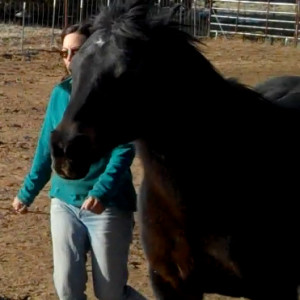
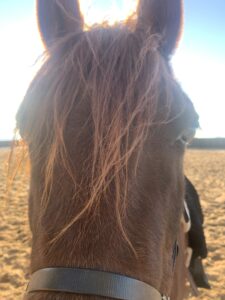
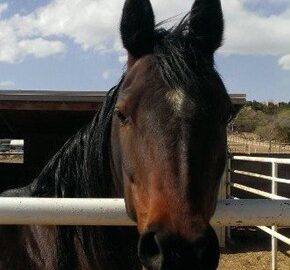
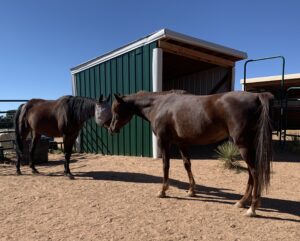
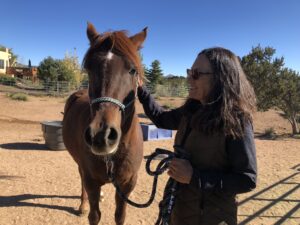 Red isn’t a replacement, she is her own horse. She is young and curious about everything, and especially her interactions with humans and her training. She loves her training. What I’m seeing in her is that everything is an adventure. While her first years were fraught with uncertainty, fear and mistreatment, when she didn’t want anyone to catch or touch her, she has now landed somewhere where everyone listens to her and she wants to listen.
Red isn’t a replacement, she is her own horse. She is young and curious about everything, and especially her interactions with humans and her training. She loves her training. What I’m seeing in her is that everything is an adventure. While her first years were fraught with uncertainty, fear and mistreatment, when she didn’t want anyone to catch or touch her, she has now landed somewhere where everyone listens to her and she wants to listen.